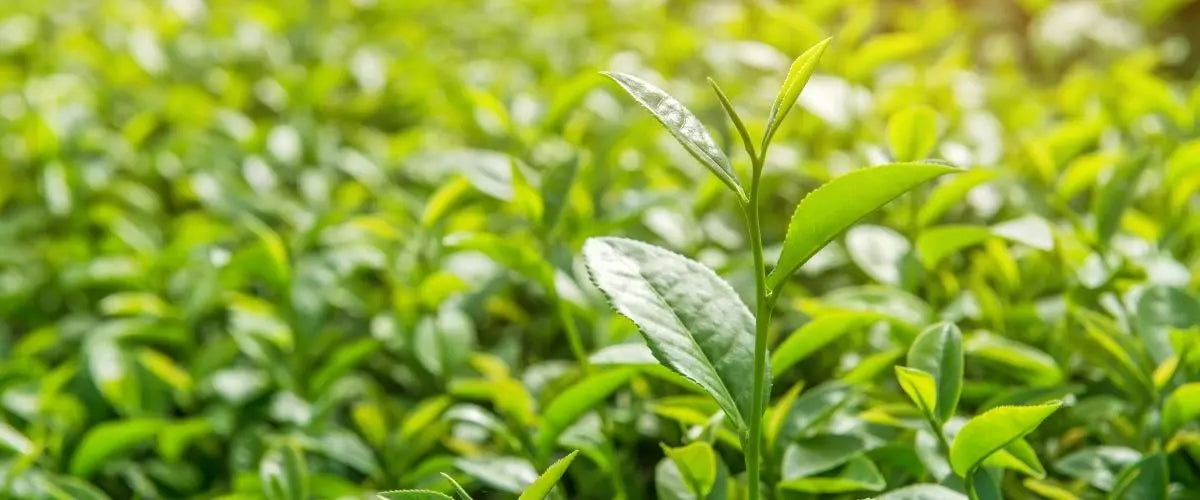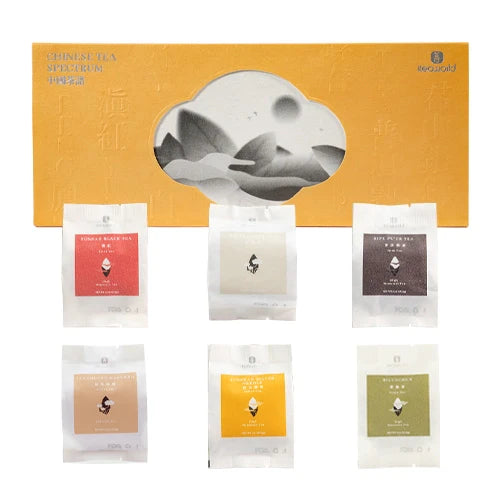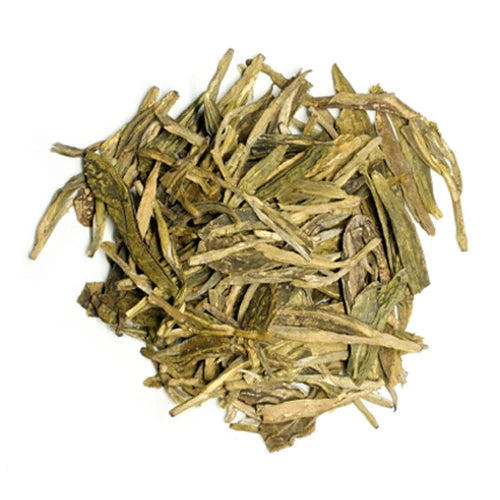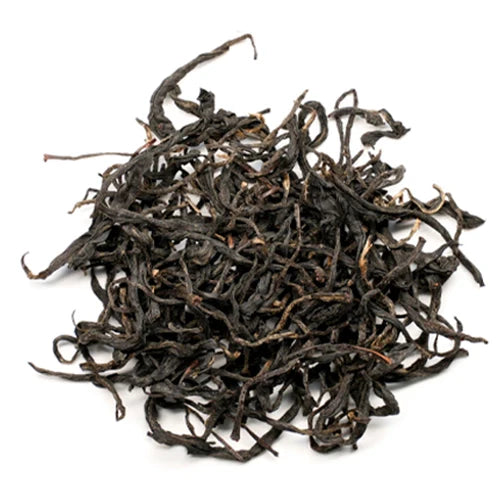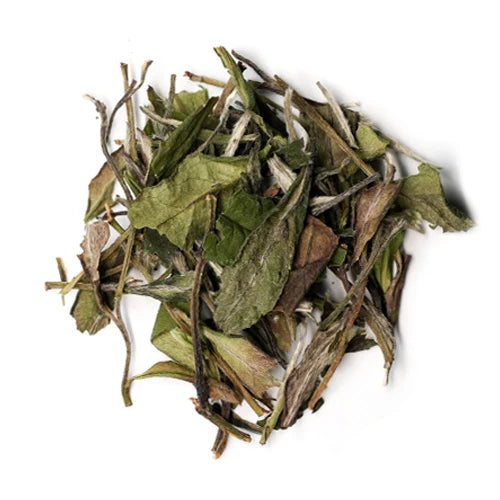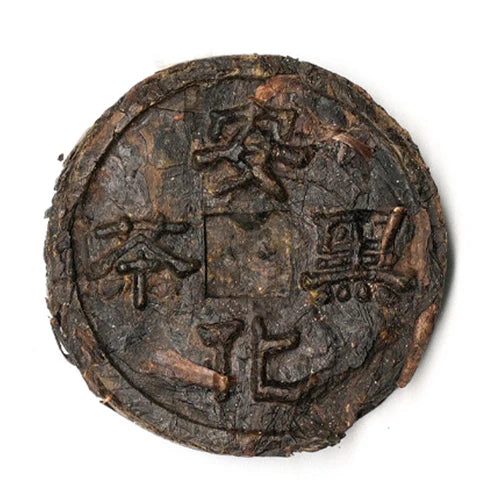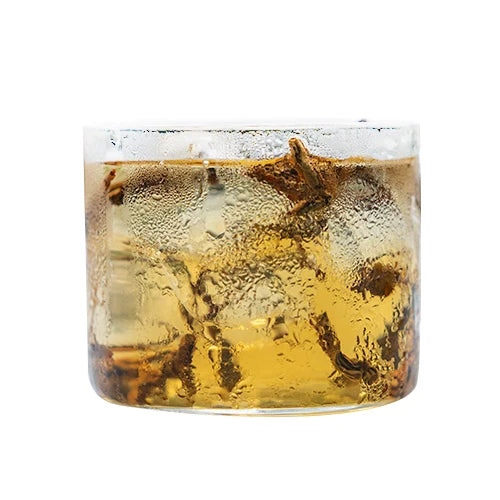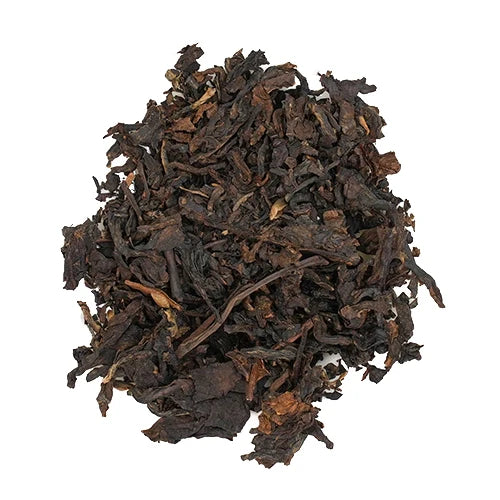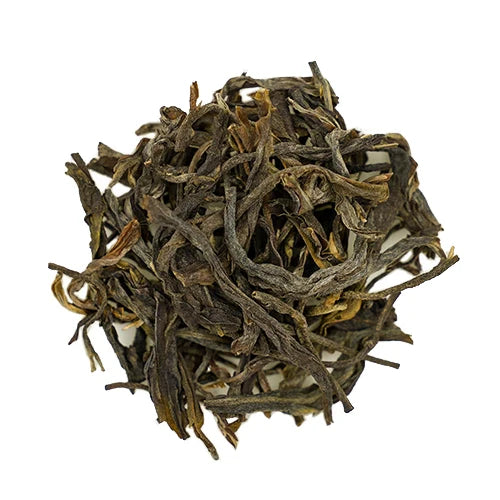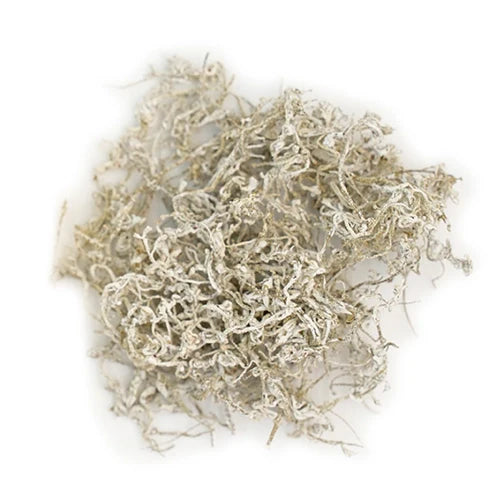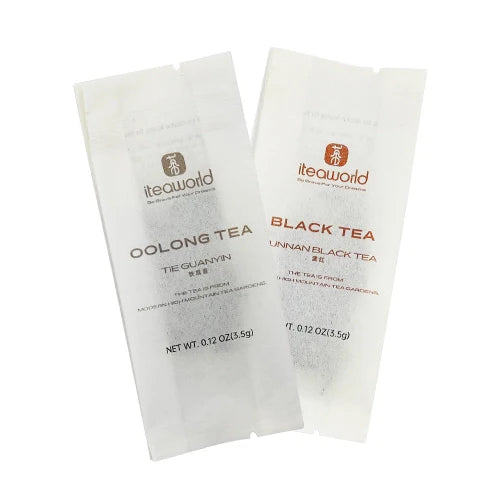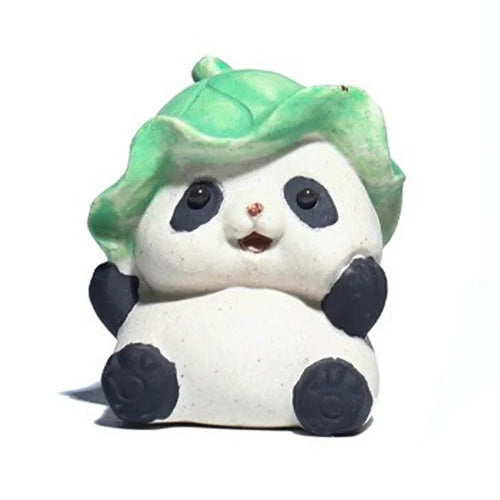Познакомьтесь с нашими чайными фермерами

Познакомьтесь с нашими чайными фермерами
Мадам Хуан Цзямэй: мастер чайной церемонии, замаскированный под повара
на май 19 2025
Спрятавшись в туманных горах уезда Шанлинь, Гуанси, госпожа Хуан Цзямэй на первый взгляд может показаться скромной деревенской кухаркой. Она держит скромную лавку, торгующую рисовой лапшой и жареной уткой. Но не заблуждайтесь: за прилавком стоит настоящий мастер дикого чая .
Хуан Цзямэй — один из наших партнёров-чаеводов, специализирующийся на диком чёрном чае. Она живёт в уезде Шанлинь города Наньнин, провинции Гуанси-Чжуанский автономный округ — горном районе, куда можно добраться на машине от станции высокоскоростной железной дороги Наньнин примерно за три часа. Шанлинь — относительно бедный уезд, где проживает много представителей народностей чжуан и яо.
Около десяти лет назад, в поисках древних чайных деревьев, мы обратились к журналу Guangxi Geography и местным чайным хроникам. Из них мы узнали, что на горе Дамин, возможно, всё ещё растут дикие древние деревья. Поэтому мы отправились туда и посетили местных чайных фермеров, по одному дому за раз. Так мы наконец познакомились с госпожой Хуан.
Её чёрный чай был просто замечательным — настолько насыщенным и мягким, что даже свежий чай имел вкус, словно ему было пять лет. Позже мы узнали, что это не случайно. Она училась чаеварению у опытного мастера из снабженческо-сбытового кооператива провинции Гуанси и достигла особого мастерства в изготовлении диких чёрных и зелёных чаёв этого региона.
Чай на горе Дамин имеет долгую историю. В «Путевых заметках» Сюй Сякэ, знаменитый путешественник времён династии Мин, описывал гору как «окутанную облаками» – место, одновременно прекрасное и идеально подходящее для выращивания чая. Выращивание и обработка чая в этом районе начались ещё во времена династий Мин и Цин, в основном для местного потребления. В 1956 году система Нункэн в Гуанси основала первую государственную чайную плантацию на горе Дамин, расчистив более 100 му террасных земель и засеяв семенами чая, в основном крупнолистовых сортов Юньнани, чтобы начать масштабные посадки.
К 1965 году чайный завод был запущен в эксплуатацию, и гора Дамин стала ключевой базой для экспорта ломаного чёрного чая, известного своими «тёмными гранулами, ярко-красным настоем и насыщенным вкусом». Один из выдающихся местных сортов — крупнолистовой чай Аньтан, местный сорт, богатый аминокислотами, идеально подходящий для чёрного и тёмного чая. Сегодня это некогда забытое сокровище вновь открыто. Наш дикий чёрный чай изготавливает мадам Хуан именно из этого местного сорта.
Это сделанная вручную вывеска с изображением чая, которая висит перед домом мадам Хуан.
Сегодня она — ведущий эксперт как по заварке, так и по продаже чая в своей деревне. Большинство жителей деревни не умеют обрабатывать чай самостоятельно, поэтому продают ей свежие листья, а она занимается всем остальным — от обработки до поиска покупателей.
Мадам Хуан — жизнерадостная и заботливая мать. В то время как многие жители деревни уехали работать в город, она решила остаться, чтобы её двое детей росли рядом с родителями. Чтобы прокормить семью, она не только заваривает чай, но и продаёт рисовую лапшу по-гуансийски и жареную утку.
Когда она отправляется в горы собирать чай, она берет с собой пятицветный клейкий рис, окрашенный натуральными красителями с использованием различных местных растений.
Мы навестили её в разгар чайного сезона. Она часто не спит ночами, заваривая чай, а днём продаёт рисовую лапшу и жареную утку. И всё же её стандарты никогда не колебались. Взять, к примеру, её жареную утку: каждую утку ощипывают вручную. « Другие часто используют асфальт для удаления перьев, — сказала она нам, — но это ядовито. Если я сама не стала бы его есть, как я могу продавать его другим? » Годы ручного ощипывания привели к тому, что её большой палец на правой руке навсегда согнут.
Мадам Хуан также очень избирательно подходит к выбору чая, используя только листья без пестицидов. Она настаивает на том, что всё, что предназначено для употребления в пищу, должно быть безопасным. Годы заваривания чая оставили на её руках чёрные пятна, которые уже не отмыть. Когда мы спросили её, почему она продолжает заваривать чай, она ответила: « Сначала это было для выживания. Потом я влюбилась в горы и сбор чая. К тому же, я смогу делать это даже в старости — это даёт мне чувство безопасности ».
Она также научила нас отличать дикий чай от чая, выращенного на плантации. « Дикий чай становится тоньше, словно ему не хватает питания », — пошутила она. « Но дикие сорта — это обычно местные сорта с более медленным циклом роста. При одинаковых условиях сбора они, как правило, более нежные».
В её рисовой лапше чай всегда бесплатный. Любой желающий может зайти и налить себе чашечку. Этот чай заваривается из просеянных кусочков, оставшихся после обработки красного чая. Он не изысканный, но согревающий, ароматный и сытный.
А рисовая лапша? Незабываемое удовольствие. Лучшая лапша в стиле Гуанси, которую мы когда-либо пробовали. К сожалению, нам не удалось попробовать её жареную утку — она настолько популярна, что её быстро раскупают. Люди приезжают издалека, чтобы купить её. Честно говоря, мы начали верить, что те, кто мастерски владеет чаем... могут быть ещё и талантливыми поварами от природы.
Процесс сбора и приготовления чая вместе с Хуан Цзямэем.
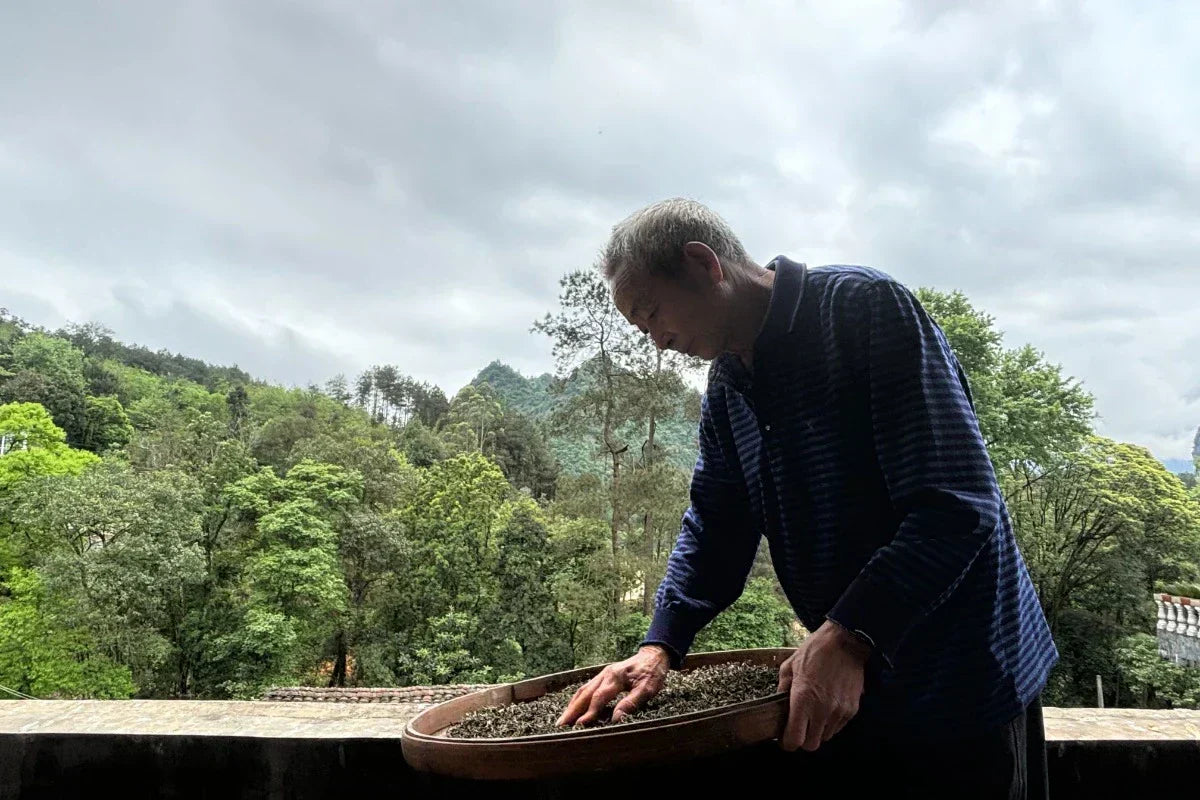
Познакомьтесь с нашими чайными фермерами
Дедушка Чэнь: скромный мастер дикого чая баймао
на май 19 2025
Чэнь Шанжэнь, родившийся в 1952 году, всю свою жизнь прожил в деревне Дуннань, одном из самых известных регионов, где выращивают чай Кайшань Баймао ( зелёный чай ) . С юных лет он проникся глубокой любовью к чаю, особенно к дикому чаю, растущему высоко в горах, в таких местах, как Гунданьчун и Шибаньчун. Обработка этих диких белых чаёв — его главное призвание.
Наши пути впервые пересеклись с дедушкой Чэнем в 2015 году. В то время мы искали чай с характерным ароматом бетеля, присущим только элитному чаю Любао. Этот аромат мог дать только сорт Гуйцин. В то время чай Гуйцин в регионе Любао стал довольно дорогим, поэтому мы начали искать более экономичный источник. Благодаря историческим исследованиям мы обнаружили, что город Кайшань когда-то производил дань для императорского двора – чай Кайшань Баймао. Высокогорье региона также создавало благоприятные условия, поэтому мы начали посещать местных чайных фермеров, по одному хозяйству за раз.
Так мы познакомились с дедушкой Чэнем. Сначала нас покорил его чай, но вскоре мы почувствовали влечение к нему самому. Дедушка Чэнь — очень скромный человек, немногословный, но непоколебимо уверенный в своём чае. Он открыто и справедливо отзывается о качестве чая других фермеров, не стесняясь указать, кто делает это хорошо, а кто нет. Он справедливый и объективный чайный мастер, с оттенком гордой честности.
Вид снаружи дома дедушки Чена
Чайные листья, которые собирает Дедушка Чэнь, поистине исключительны. Выращенный исключительно натуральными методами, соответствующими европейским стандартам органического питания, он поступает из уединённых высокогорных долин. Хотя он в основном производит зелёный чай (чай Кайшань Баймао ), позже мы обнаружили, что его листья, покрытые тонкими белыми ворсинками, идеально подходят и для белого чая. Мы даже использовали часть его урожая для производства белого чая, который не уступал, а по соотношению цены и качества, даже превосходил белый чай Фудин, заслужив широкое признание ценителей чая.
Дедушка Чэнь живёт с женой и двумя внучками, а их дети работают в городе. Младшая внучка, возможно, не привыкшая видеть молодёжь в деревне или скучающая по матери, всё время следовала за нами. Когда пришло время уходить, она плакала. Этот момент мы запомнили надолго.
Глядя на чайный сад дедушки Чэня и его глубокие познания в чае, мы невольно задаёмся вопросом: кто продолжит его дело? Он стареет, и подниматься в горы за чаем с каждым годом становится всё сложнее. Эта тревога тяготит наши сердца.
Следуйте за дедушкой Ченом и его маленькой внучкой, когда они поднимаются в горы, чтобы собрать и выпить чая.
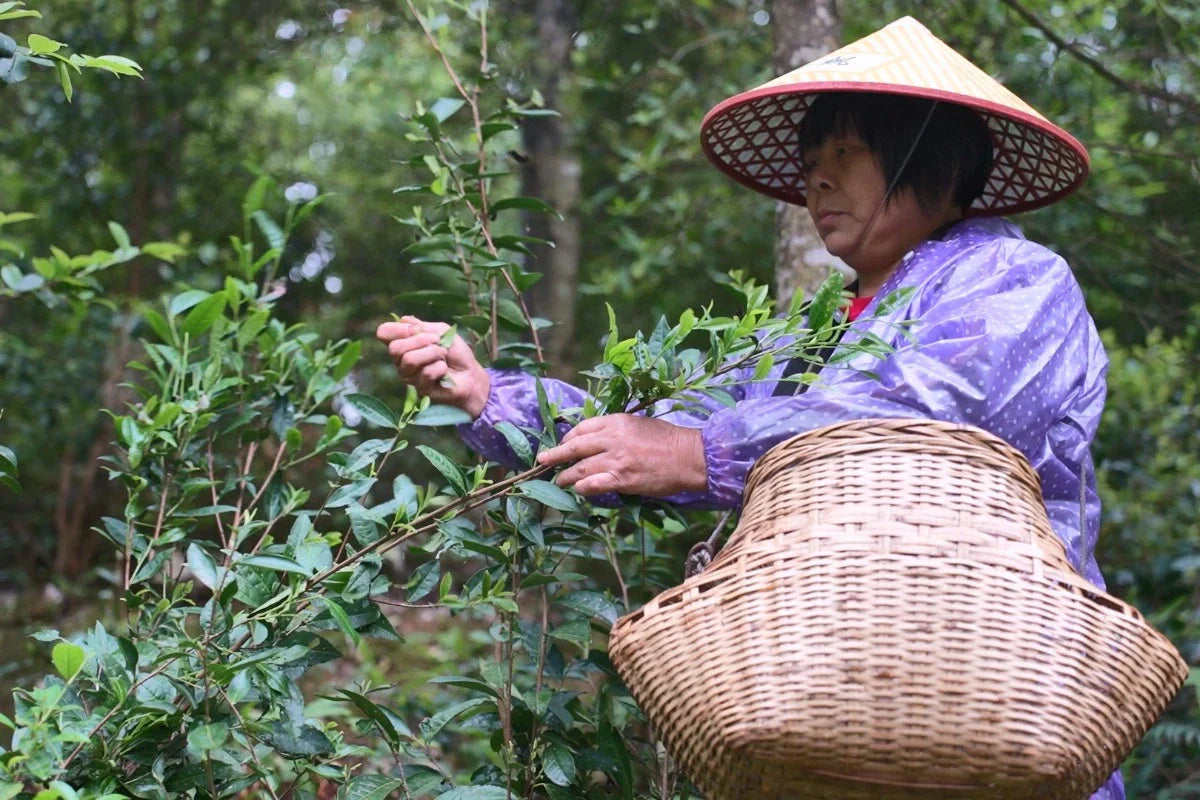
Познакомьтесь с нашими чайными фермерами
Одна женщина, одна гора, одна традиция: жизнь тетушки Ли в чаепитии
на май 19 2025
Тётя Ли живёт в той же деревне, что и бабушка Ли — они соседки, всего в нескольких шагах друг от друга. Хотя тётя Ли немного моложе, ей уже за пятьдесят. Она собирает и заваривает чай с детства, переняв это ремесло непосредственно у отца. Из своих четырёх братьев и сестёр она единственная, кто решил остаться и продолжить семейную чайную традицию.
Тётя Ли выделяется своей необычайно живой и разговорчивой личностью для чайного фермера. Она провела нас по извилистым горным тропам к своим чайным плантациям в глубине холмов. Дорога была долгой, а местность – крутой. Многие уже отказались от сбора урожая на этих удалённых участках. Но не тётя Ли. Когда мы спросили её, почему она осталась, она улыбнулась и сказала: « Я решил остаться, потому что люблю горы и люблю заваривать чай. Жизнь здесь проста, но она наполняет меня покоем и смыслом. Если бы я в моём возрасте переехал в город, всё, что я мог бы делать, – это заниматься тяжёлым трудом. Но здесь, заваривая чай у себя дома, я чувствую себя свободным » .
Вид перед домом тети Ли
Когда мы приезжаем к чайным фермерам, они редко знакомят нас с другими – обычно они сосредоточены на собственном урожае. Тётя Ли была другой. Она надеялась, что мы сможем поработать с большим количеством жителей деревни, и лично провела нас к нескольким соседним чайным фермерам. По их тёплому приёму мы поняли, как трудно местным фермерам продавать свой чай. Конечно, их гостеприимство было искренним и непринуждённым.
Тетя Ли везёт нас в гости к близлежащим чайным фермерам
Когда мы шли по обочине дороги, тётя Ли вдруг заметила куст дикого чая, цепляющийся за крутой склон. Не раздумывая, она осторожно, но смело поднялась наверх, рискуя поскользнуться, чтобы сорвать несколько нежных листочков.
В деревне тёти Ли чайные деревья никогда не обрезают и не обрабатывают, оставляя их расти естественным образом в чаще леса. Жители деревни теперь в основном пожилые, а чайные плантации находятся далеко от дома. Дорога туда и обратно утомительна, и мало у кого теперь есть силы ухаживать за землёй.
Чайные сады тетушки Ли – Глубоко в горах, дикие и свободные
Здесь повседневным напитком является тёмный чай, в частности, чай любао, родом из уезда Цанъу. Местные жители заваривают его в чайнике и пьют в течение дня, чтобы освежиться и снять усталость. Когда приходят гости, им всегда предлагают чашку. Чай любао известен своей мягкостью и, в особенности, способностью рассеивать внутреннюю сырость – распространённое заболевание в жарком и влажном климате региона. В конце XIX – начале XX веков чай любао стал спасением для китайских рабочих в Юго-Восточной Азии. Он был дешёвым, удобным в хранении и бесценным в тяжёлых условиях труда, особенно для шахтёров и других рабочих.
Даже сегодня чай любао остаётся популярным в Юго-Восточной Азии. Местные жители утверждают, что его согревающие и детокс-свойства делают его особенно подходящим для местного климата. И, конечно же, он обладает множеством других полезных свойств для тех, кто хочет узнать о нём больше.
Вот как мы с тетушкой Ли поднимаемся в горы собирать чай.
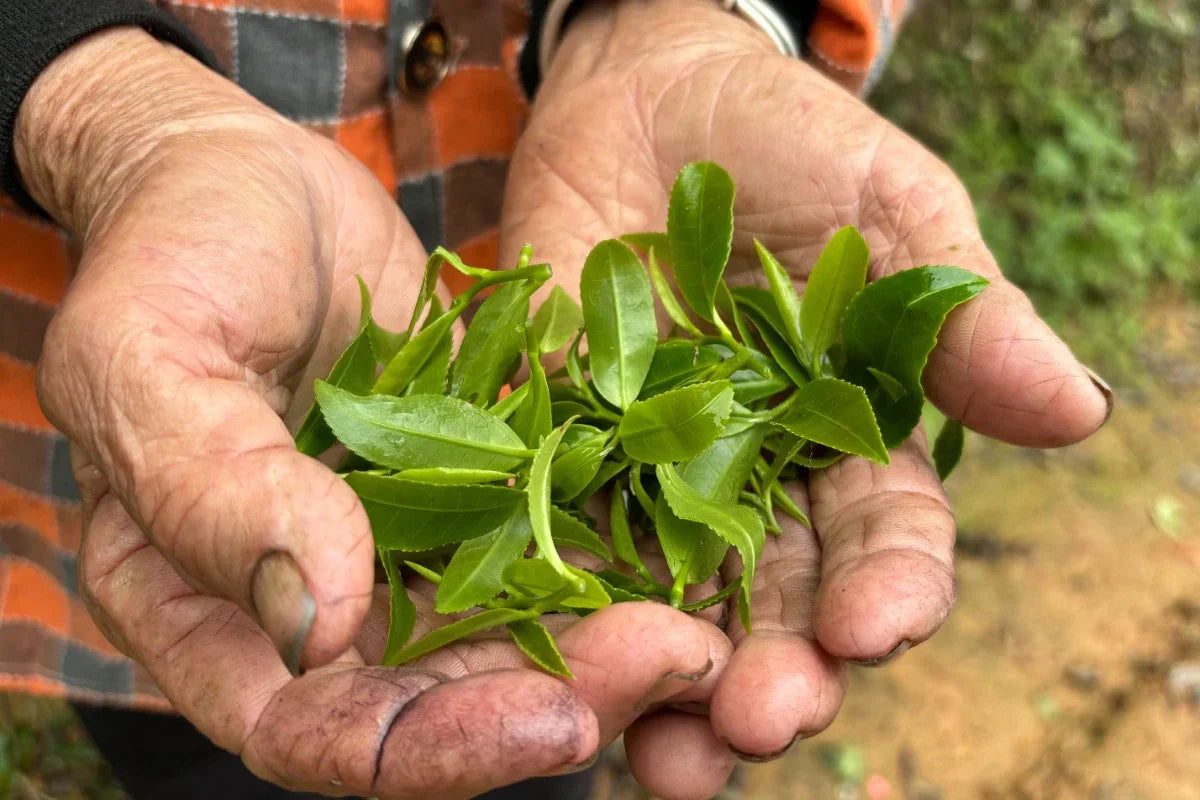
Познакомьтесь с нашими чайными фермерами
на май 16 2025
Мы познакомились с бабушкой Ли в 2015 году.
Сейчас ей за семьдесят, и она живёт тихой жизнью с мужем у подножия горы в уезде Цанъу города Учжоу, провинция Гуанси. Её специализация — чай Лю Бао. И не просто Лю Бао — её чай, на наш взгляд, лучший в деревне. Её умение сочетать мастерство и качество сырья просто поразительно.
Каждый год она производит несколько сотен цзинь «Лю Бао маоча», и мы покупаем все.
Её дом — один из немногих сохранившихся традиционных домов из чёрного кирпича в регионе. Он трёхкомнатный, двухкоридорный. Центральный зал служит для приёма гостей и почитания предков, а боковые комнаты — спальнями. Дополнительные боковые крылья, используемые как кухня или кладовые, создают в доме атмосферу умиротворённого дворика. Как и у многих опытных чайных фермеров, которых мы посетили, её дом безупречен — тихий порядок, говорящий о многом.
Приготовление чая — это кропотливое ремесло. Температура, влажность, время обжарки, давление скручивания, ферментация — каждая мелочь может повлиять на конечное качество. Люди, преуспевающие в этом ремесле, часто обладают глубокой чувствительностью к деталям, развитым чувством контроля, ритма и порядка. Эта привычка естественным образом распространяется на их жизнь и на то, как они ведут хозяйство.
Это руки бабушки Ли. У многих опытных чаеваров, тех, кто действительно обрабатывает чай вручную, на пальцах есть тёмные пятна: тёмно-коричневые или даже чёрные . На первый взгляд, они могут показаться грязью, которую не отмыть. Но эти следы не от нечистоты. Это следы от чая .
В процессе обработки чая, особенно во время скручивания, фиксации и обжарки, полифенолы чая окисляются. Именно это объясняет изменение цвета улуна и чёрного чая. Когда руки соприкасаются с большим количеством свежих чайных листьев, сок просачивается в кожу и реагирует с кислородом воздуха, образуя теарубигины и другие насыщенные соединения. Эти отметины остаются на коже. Они буквально являются отпечатком чайного мастерства.
Однажды мы попросили бабушку Ли отвезти нас в её чайный сад. Он расположен на полпути к вершине горы. Мы не могли поверить, как быстро она двигалась — эта семидесятилетняя женщина пробиралась по узким горным тропам быстрее, чем мы, гораздо моложе, могли за ней угнаться.
Поднимаясь, бабушка Ли невольно вздохнула: «Старею…» Глядя ей вслед, пока она уверенно поднималась по тропе, мы вдруг почувствовали невольную боль в сердце. Этой тропой она проходила бесчисленное количество раз — точно так же, как она заваривает чай, снова и снова, день за днём, год за годом. Не ради славы. Не ради развлечения. Просто чтобы заработать на жизнь.
В этих изолированных чайных районах остались только старики и брошенные дети. Молодёжь уехала в города на заработки. Эти горные чайные плантации редко обрабатываются пестицидами и не подвергаются интенсивному уходу. Урожайность низкая. Дохода, который они приносят, недостаточно, чтобы прокормить молодое поколение.
Умение бабушки Ли заваривать чай может угаснуть вместе с ней. Возможно, некому будет его продолжить.
И всё же бабушка Ли — лишь одна из тысяч пожилых мастеров чая в этих отдалённых горных районах — тихий символ угасающей традиции. Своими руками они создают один из лучших чаёв в мире. Но без доступа к хорошим каналам сбыта их заработка едва хватает на жизнь.
Мы хотим помочь, донося её чай и истории, связанные с ним, до большего числа людей. Возможно, если мы сможем создать более благоприятный рынок, некоторые из этих молодых родителей вернутся домой. Возможно, они перейдут к старшему поколению, останутся со своими детьми и сохранят эту прекрасную горную традицию.





